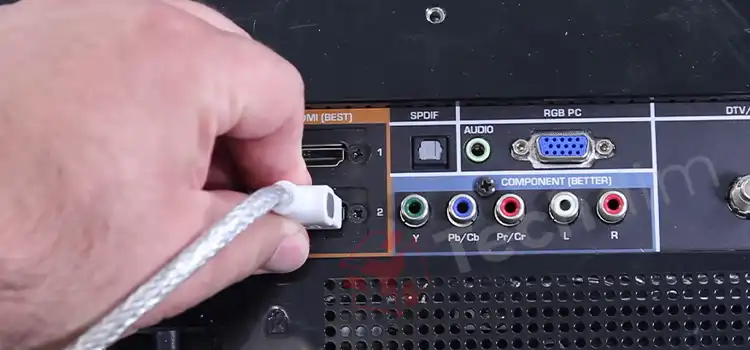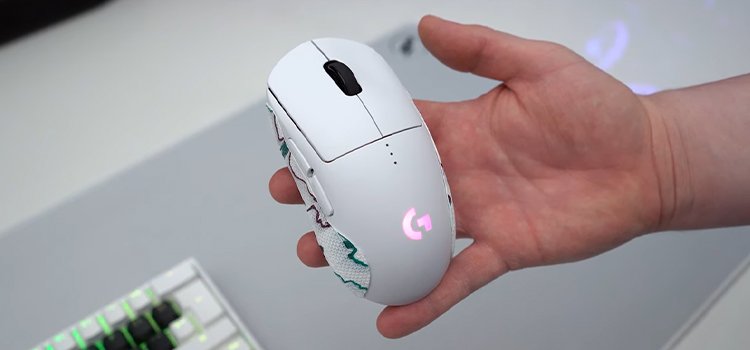[Answered] Do Motherboards Come with SATA Cables?
SATA cables are a must to connect the necessary drives to your motherboard. A motherboard usually comes with 2-4 SATA cables and sometimes even 8 depending on the manufacturer. But you can always buy more SATA cables separately depending on your needs.
If you have used up all your SATA cables on different drivers and don’t have any left for your HDD, SDD, or Optical Drive, you’ll need to buy more separately since they often don’t come with their own SATA cable.

What Are SATA Cables and Why Are They Essential for the Motherboard?
SATA (Serial Advanced Technology Attachment) cables are data storage device cables. It transfers data between a computer and SATA-enabled devices. This includes HDD, SSD, and optical drives. SATA cables can transfer data at a speed of up to 600mbps.
SATA cables connect drivers such as HDD, SSD, etc. to the motherboard. These SATA cables have pins, typically 7 pins that transmit data to the motherboard from the drives and vice versa. These SATA cables are known as SATA data cables which are slightly different from SATA power cables. Both your motherboard and the disk must support the same SATA cable for it to work properly.
What Are the Types of SATA Cables You Can Get?
When buying a motherboard, the manufacturer usually specifies what types of SATA cables you can choose from. Among the many types of SATA cables, the most popular are SATA 2 and SATA 3, also known as SATA 3Gb/s and SATA 6Gb/s respectively.
SATA 3 is becoming more and more popular and is now the industry standard for usage with most drives. It is also the newest version which is better than the previous SATA 2 cables that offer a transfer speed of only 3Gb/s whereas SATA 3 offers 6Gb/s.
There’s also MSATA aka MiniSATA which is mainly used in netbooks or small devices that needs a smaller SSD. So, you won’t receive MSATA with your motherboard.
Another type of SATA cable is the SATA power cable that comes with your power supply rather than your motherboard. It consists of 15 pins which makes it easy to differentiate from the SATA data cables.
There are also a few other types of SATA cables but they come with the motherboard you’re buying and you most likely will never have to touch those since they come pre-installed.
What Should You Look for When Buying SATA Cables Separately?
It is important that you know what you should be looking for when buying SATA cables. Otherwise, you might buy the wrong ones. Here are some of the things that you should keep in mind when buying SATA cables:
1. Length of the Cable
One of the most important aspects to remember when buying a SATA cable is the length. The cables should be long enough to reach from your motherboard to your HDD or SSD. You will face difficulties if it doesn’t connect properly.
2. Type of Connector
Two types of connectors are available for SATA cables – straight and right-angled connectors. The right-angled connector is needed if the computer case has less space. Otherwise, the straight connector can be used.
Straight SATA Cable Connector
As the name suggests, the shape of these types of connectors is straight and they typically come in lengths of 1, 2, or 3 feet. The advantages of using a straight SATA cable are:
- Reduced clutter.
- Easier to route and install.
- Less susceptible to interference from other devices.
But there are also some disadvantages:
- More difficult to remove.
- May not be compatible with all SATA devices.
Right-angled SATA Cable Connector
These types of connectors are usually used for connecting devices outside the computer case. These types of SATA cables are positioned at a 90-degree angle which saves space in cramped quarters. It also improves airflow where multiple drives are installed.
3. Number of Pins
SATA cables usually consist of either 7 or 9 pins. 9-pin connectors are better for higher-end computers. Otherwise, the 7-pin connectors will do just fine.
Frequently Asked Questions (FAQs)
How many SATA cables do I need?
Most motherboards come with 2 cables. Each device needs one SATA cable. If you are short on them then you can buy more depending on how many you need. They are not that expensive.
How many SATA ports are on a motherboard?
There are usually about four to eight SATA ports on a motherboard. However, depending on how big the motherboard is and what chipset it’s using, the actual number of it can vary.
How do I know if my motherboard has SATA 3 ports?
You will need to check your motherboard. Near the SATA ports, it should say “SATA 3G” or “SATA 6G”. There is also a software called HWiNFO which you can download and install to check what SATA ports you have on your motherboard.
Conclusion
SATA cables are an essential part of building a PC and they are provided with most motherboards when making a purchase. We hope that we were able to provide you with enough information so that you won’t have any issues regarding SATA cables.
Subscribe to our newsletter
& plug into
the world of technology




